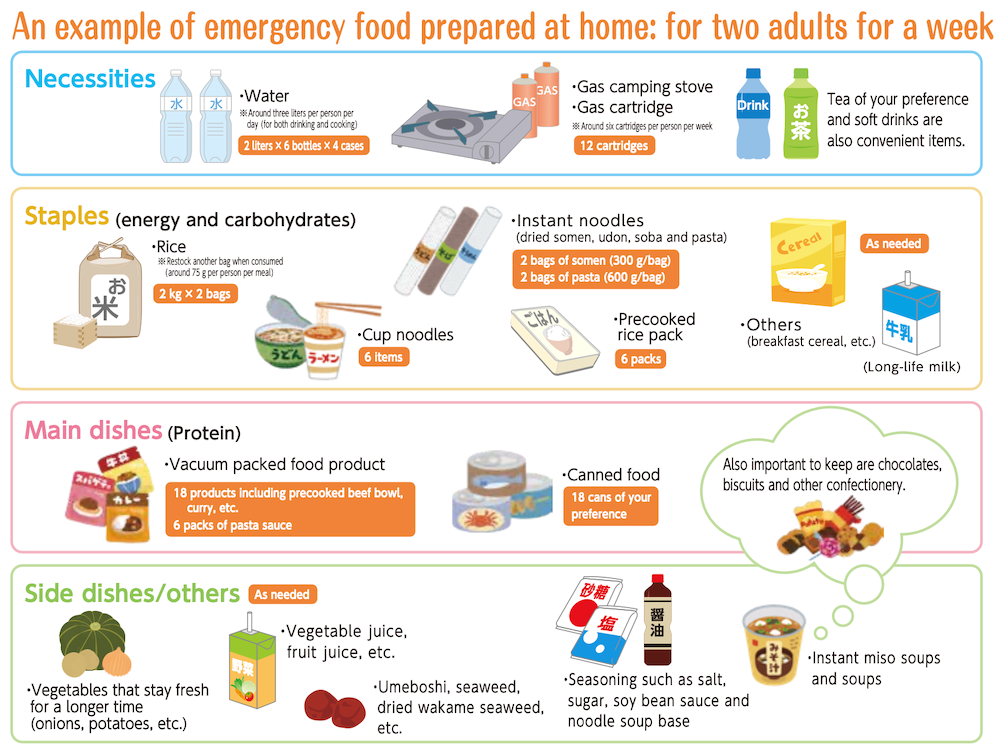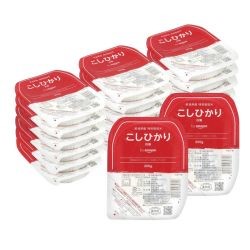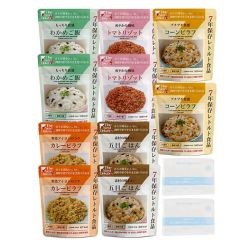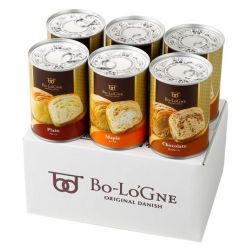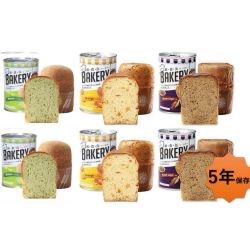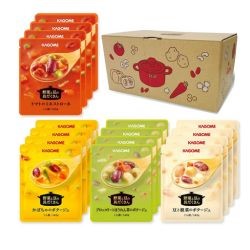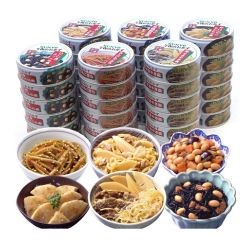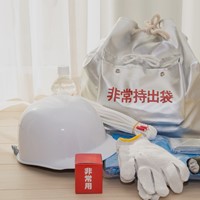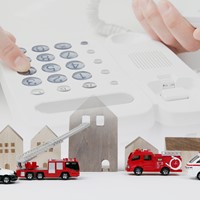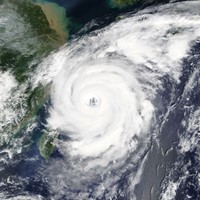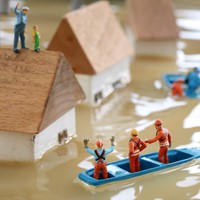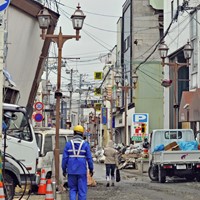Disaster Preparedness: Stockpiling and Emergency Food in Japan
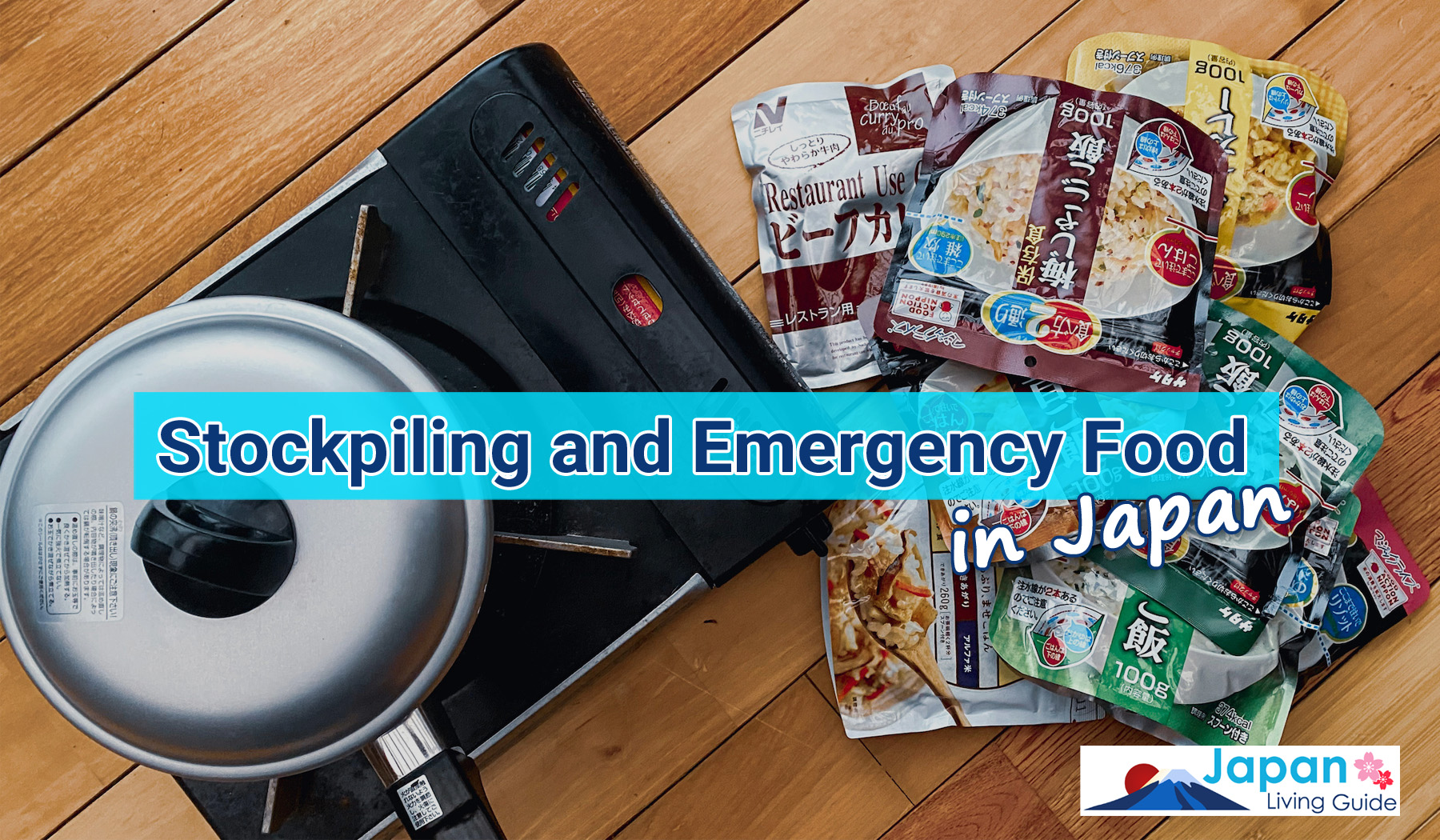
This page contains affiliate links.
Major disasters such as typhoons, earthquakes and torrential rains can happen at any time. When a disaster strikes, lifelines such as electricity, gas and water may become unavailable and logistics may cease to function. If logistics stop, it will be difficult to get food at supermarkets and convenience stores, therefore it is important to stockpile food in case of a disaster.
This article provides tips on food stockpiling, including what to stockpile, how much and how to do it.
Disaster Preparedness: Emergency Bag in Japan >>
How Much Should be Stockpiled?
According to past disasters, in most cases it takes more than a week from the time of a disaster to restore lifelines. For this reason, it is important to stockpile at least three days' worth of food at home, and preferably a week's worth.
The Japanese government advises citizens to stockpile water, food, and other necessities for at least 3 days, preferably 1 week.
What Should be Stockpiled?
After a disaster, lifelines may stop. Water and a heat source such as a portable stove are essential. Below are the recommended food stockpiles as listed on the Ministry of Agriculture, Forestry and Fisheries (MAFF) website .
An example of emergency food prepared at home: for 2 adults for a week
Each person needs approximately 3L of water per day for drinking and cooking. In addition, tea and soft drinks in plastic bottles or cans are also good to stock. You will need about 6 gas cartridges per person/week. You can boil water, heat food. A hot meal warms up your body and eases tension and anxiety.
Necessities
・Bottles of Water: 2L x 24 bottles (about 3L per person per day)
・A portable stove: x 1
・Gas cartridges: x 12 (about less than 1 cartridge per person per day)
Staple food (rice, bread, etc.)
・Rice: 2kg x 2 bags (around 75 g per person per meal)
・Instant noodles (dried somen, udon, soba and pasta): 2 bags of somen (300 g/bag), 2 bags of pasta (600 g/bag)
・Cup noodles: x 6 cups
・Precooked rice packs: x 6 packs
・Others: such as breakfast cereal, long-life milk etc.
Main dishes (protein)
・Vacuum packed food product: 18 products including precooked beef bowl, curry, etc.
・Pasta sauce: 6 packs
・Canned food: 18 cans of your preference
Side dishes/others (as needed)
・Vegetables: which stay fresh for a longer time (onions, potatoes, etc.)
・Vegetable juice, fruit juice, dried fruits
・Umeboshi, seaweed, dried wakame seaweed
・Seasoning such as salt, sugar, soy bean sauce and noodle soup base
・Instant miso soup and other soup
Also important to keep are chocolates, biscuits and other confectionery.
Japanese Preserved Foods: A Guide to Traditional Preservation Methods >>
Infants, the Elderly, and People with Pre-existing Conditions or Allergies
It is important to stockpile at least 2 weeks' worth of food suitable for each person. In times of disaster, consideration must be given to infants, the elderly, people with impaired eating functions (chewing and swallowing), people with chronic illnesses and people with food allergies.
It is precisely in times of disaster that the diet of these people becomes important, so be prepared to provide them with a diet as close to their normal state as possible. If you are prepared on a regular basis, you will feel more secure in times of emergency.
In the aftermath of the Great East Japan Earthquake, some people were unable to obtain allergy-free food, which excludes eggs, milk and wheat, for more than a month. Depending on your situation, you will need to stockpile at least two weeks' worth of food.
For Infants
Milk: If breast milk is not sufficient, powdered milk can be used. Therefore, it is a good idea to have powdered milk, bottles, paper cups and disposable spoons.
Prepare baby food: Keep a large stock of bottled or retort-packed baby food. It is also important to get used to eating retort packaged baby food.
Favourite foods and drinks: Preparing children's favourite foods and drinks can help them relax and feel secure in the event of a disaster.
For Elderly people
There is not much difference from general household preparedness. However, it is a good idea to have retort porridge or instant miso soup in case you become weak or lose your appetite. Imagine what you would like to eat when your body is weak and be prepared.
For people with chronic illnesses, devise what foods to stockpile so that they can continue the diet prescribed by their doctor as usual. Be wary of canned, instant and retort foods as they are high in salt.
For people with food allergies
Be aware that allergy-friendly foods are particularly hard to find in times of disaster. Make sure you stockpile allergy-free food.
What is "Rolling Stockpile Method"?
The 'rolling stock method' is to stock up on the food you normally eat while consuming it. You do not need to buy special emergency food to start stockpiling. Simply buy a little more of the food you normally eat, such as cup noodles, canned food and instant miso soup, consume the food with the oldest expiry date and replenish it when you have eaten it. As you maintain a stockpile of a certain amount of food by repeatedly storing, eating and restocking.
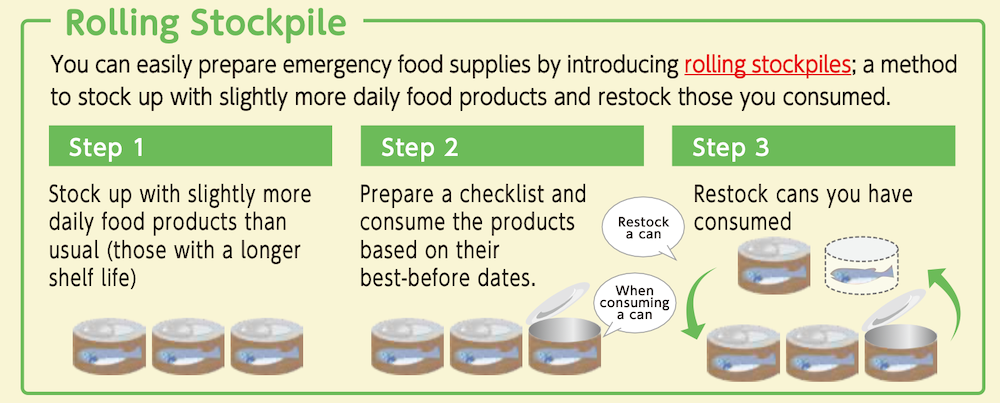
Source: Ministry of Agriculture, Forestry and Fisheries (MAFF)
Emergency Food to Purchase Online
Here are some emergency and stockpile foods that can be easily purchased online. Click on the images to find out more.
Rice
The rice has been freshly cooked (alpha rice) and quickly dried. Convenient not only for emergencies but also for overseas travel. There are many different types and flavors to choose from, so you will never get bored of it.
Bread
Both bread below has a 5-year shelf life and a soft, moist, and tasty texture without the emergency food feel. It is useful in an emergency because it can be eaten right away without the need for cooking.
Other food / Main dishes / Soup / Curry etc.
